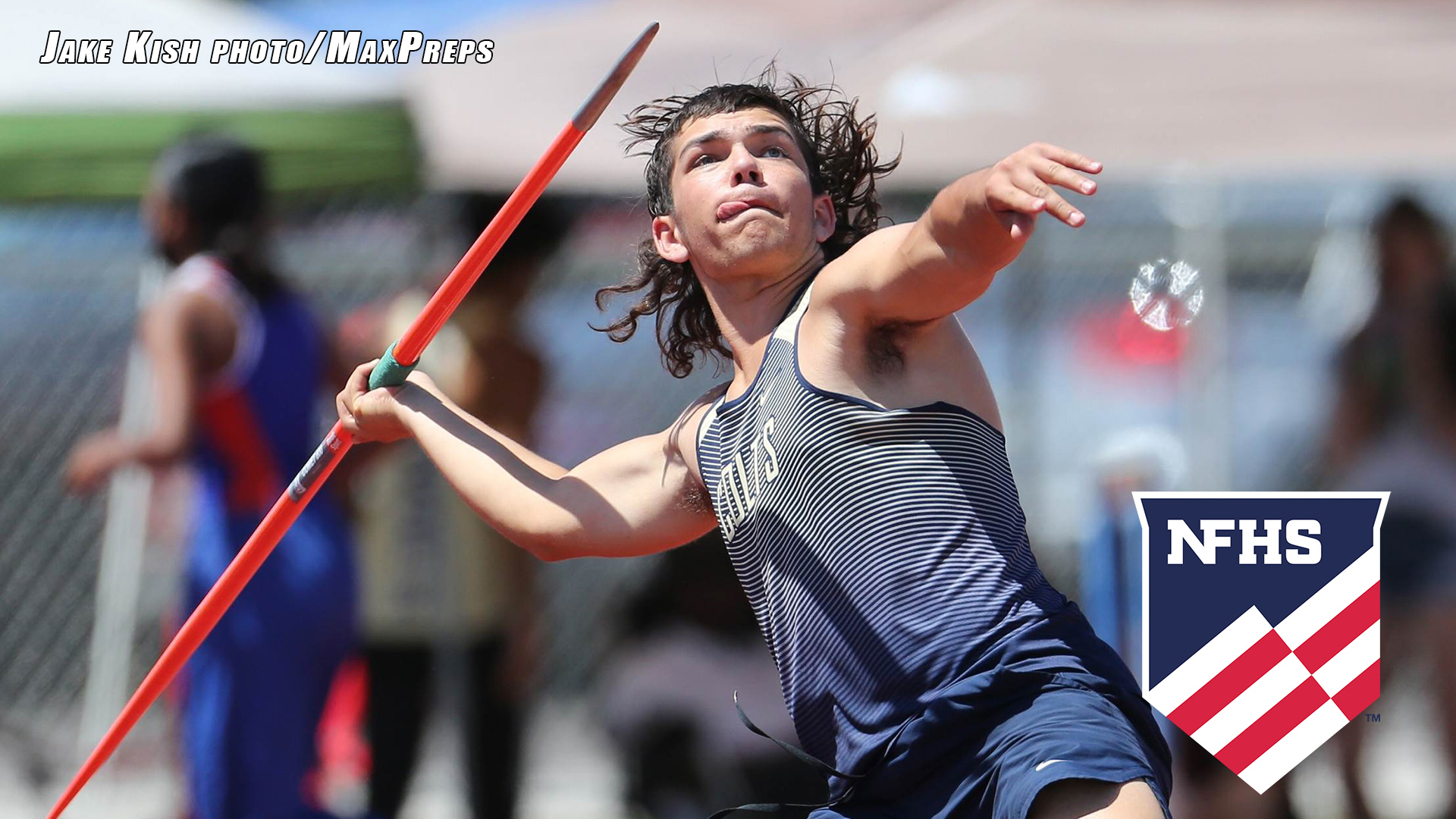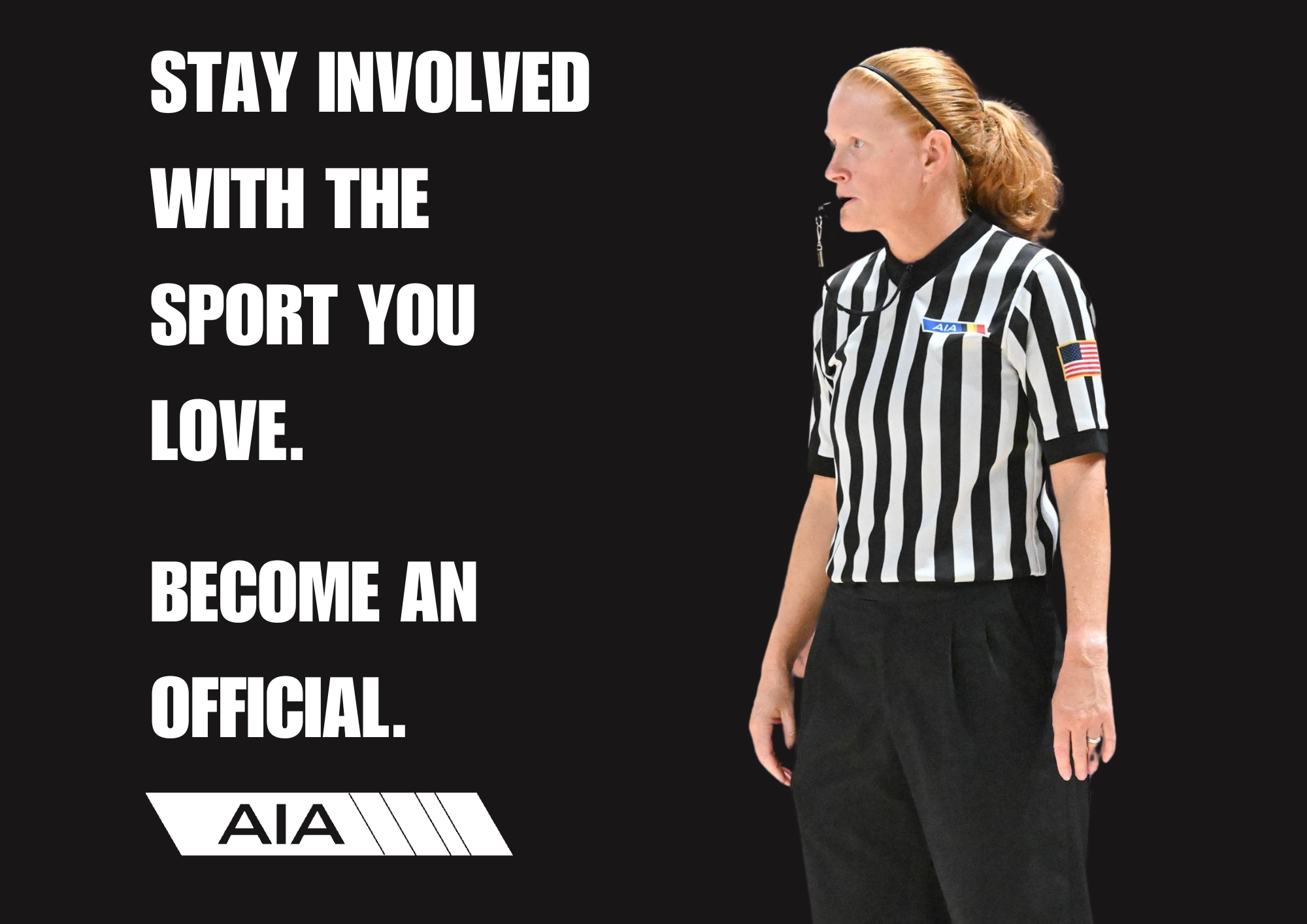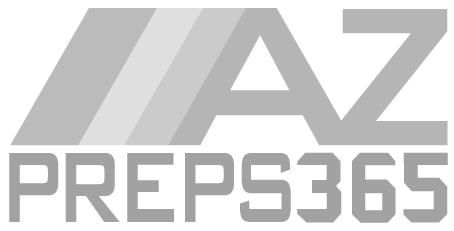Addition of javelin specifications highlight track and field rules revisions
July 10, 2025 by Seth Polansky, AZPreps365

INDIANAPOLIS, IN (July 10, 2025) — With 21 state associations now incorporating the javelin into outdoor track and field competition, the NFHS Track and Field Rules Committee voted to move the implement construction specifications into the Track and Field Rules Book, effective with the 2026 season.
The addition of javelin specifications was one of 11 changes recommended by the committee at its June 16-18 meeting in Indianapolis – all of which were subsequently approved by the NFHS Board of Directors.
“Moving the implement construction specifications for the javelin into the rules book provides greater clarity, consistency and accessibility for high school coaches, athletes and meet officials,” said Julie Cochran, NFHS director of sports and liaison to the Track and Field Rules Committee. “By incorporating the construction requirements directly into the NFHS Track and Field Rules Book, we ensure that all necessary information is readily available, specific to the high school level, and aligned with the intent of education-based athletics. This approach maintains appropriate equipment standards while promoting ease of understanding, consistent enforcement and fairness across all levels of high school competition.”
Several changes focused on minimizing risk of injury were approved by the committee. First, the assessment of a downed competitor by a health-care professional to determine the athlete’s ability to continue in an event is not considered aid. As a result, the games committee can designate an appropriate health-care professional to evaluate a downed competitor on the course without resulting in disqualification, provided no assistance is given to the competitor in progressing along the course. It prioritizes athlete safety by permitting on-course evaluation while preserving the integrity of the competition.
In addition, a new section in Rule 6-8-6 will promote risk minimization in the high jump and pole vault. The new language states that a high jump or pole vault competitor who has not entered the competition within 60 minutes from the first jump of the competition shall be allowed 1½ minutes of warm-up for high jump or two minutes for pole vault without the use of a crossbar or bungee cord under the supervision of an official. This will take place only at the beginning of a height change.
The committee noted that the current rule allows warm-up only after passing three consecutive heights, which can result in long periods of inactivity—sometimes over an hour—in large competitions. This can be a disadvantage and potential safety concern for athletes entering later.
“The committee believed that changing the rule to provide a standardized 1½ minutes for high jump or two minutes for pole vault warm-up for any athlete entering after 60 minutes of elapsed time promotes fairness, consistency and risk minimization,” Cochran said.
Another change in the high jump and pole vault concerns the addition of “items above ground level” to padding requirements in Rules 6-9-21 and 6-9-28.
“The addition of ‘above ground level’ clarifies that the padding requirement applies specifically to hard and unyielding surfaces that are elevated relative to the ground,” Cochran said. “This refinement helps differentiate between surfaces that present a greater risk of impact during a fall (such as raised concrete, asphalt, wood or platform extensions) versus ground-level areas that may already be accounted for with landing system setup.”
A change in Rule 3-2-3 gives the games committee the authority to determine the distance of takeoff boards in the horizontal jumps. As a result, the games committee can determine takeoff board placement in the long jump and triple jump aligning with its existing role in setting starting heights for the high jump and pole vault.
Two changes were made in Rule 9 regarding Indoor Track and Field. In Rule 9-1-1, the 200-meter dash was approved as an option for the 300-meter dash in the official Order of Events. The committee noted the change provides states with greater flexibility to structure events based on facility size and supports broader participation.
The other change in indoor track rules involves Rule 9-6-1, which establishes a uniform 20-meter exchange zone and creates a single standard for ease in officiating indoor relays.
Following are other changes approved by the Track and Field Rules Committee:
Rule 4-6-6c (new): No athlete shall wear audio (microphone) or video (camera) device during a race or trial or in restricted areas. This language aligns with other NFHS sports rules books.
Rule 6-2-2 NOTES: A new Note 3 was added in the section General Rules for Field Events – “The time limit for a consecutive attempt applies when taking consecutive attempts within a height and at a height change.”
Rule 6-3-2b4(a): In this section on Breaking Ties, changes were made in the metric measurements to simplify implementation, align with current metric practices and support consistency in meet management.
A complete listing of the track and field rules changes will be available on the NFHS website at www.nfhs.org. Click on “Sports” at the top of the home page and select “Track and Field.” The print version of the 2026 Track and Field Rules Book will be available for purchase in October at www.NFHS.com, and the digital version will be available in the same timeframe via NFHS Digital at www.nfhs.org/nfhsdigital.
According to the most recent NFHS High School Athletics Participation Survey, track and field is the top sport for girls with 506,015 participants in 17,267 schools nationwide, and the No. 2 sport for boys behind football with 625,333 participants in 17,274 schools.
Online link to release: https://nfhs.org/stories/addition-of-javelin-specifications-highlight-high-school-track-and-field-rules-revisions
###
About the National Federation of State High School Associations (NFHS)
The NFHS, based in Indianapolis, Indiana, is the national leadership organization for high school sports and performing arts activities. Since 1920, the NFHS has led the development of education-based interscholastic sports and performing arts activities that help students succeed in their lives. The NFHS sets direction for the future by building awareness and support, improving the participation experience, establishing consistent standards and rules for competition, and helping those who oversee high school sports and activities. The NFHS writes playing rules for 18 sports for boys and girls at the high school level. Through its 50 member state associations and the District of Columbia, the NFHS reaches more than 19,800 high schools and 12 million participants in high school activity programs, including more than 8 million in high school sports. As the recognized national authority on interscholastic activity programs, the NFHS conducts national meetings; sanctions interstate events; offers online publications and services for high school coaches and officials; sponsors professional organizations for high school coaches, officials, speech and debate coaches, and music adjudicators; serves as the national source for interscholastic coach training; and serves as a national information resource of interscholastic athletics and activities. For more information, visit the NFHS website at www.nfhs.org.
MEDIA CONTACTS:
Bruce Howard, 317-972-6900
Director of Publications and Communications
National Federation of State High School Associations
bhoward@nfhs.org
Chris Boone, 317-972-6900
Assistant Director of Publications and Communications
National Federation of State High School Associations
cboone@nfhs.org
Jordan Morey, 317-972-6900
Manager of Communications and Media Relations
National Federation of State High School Associations
jmorey@nfhs.org


